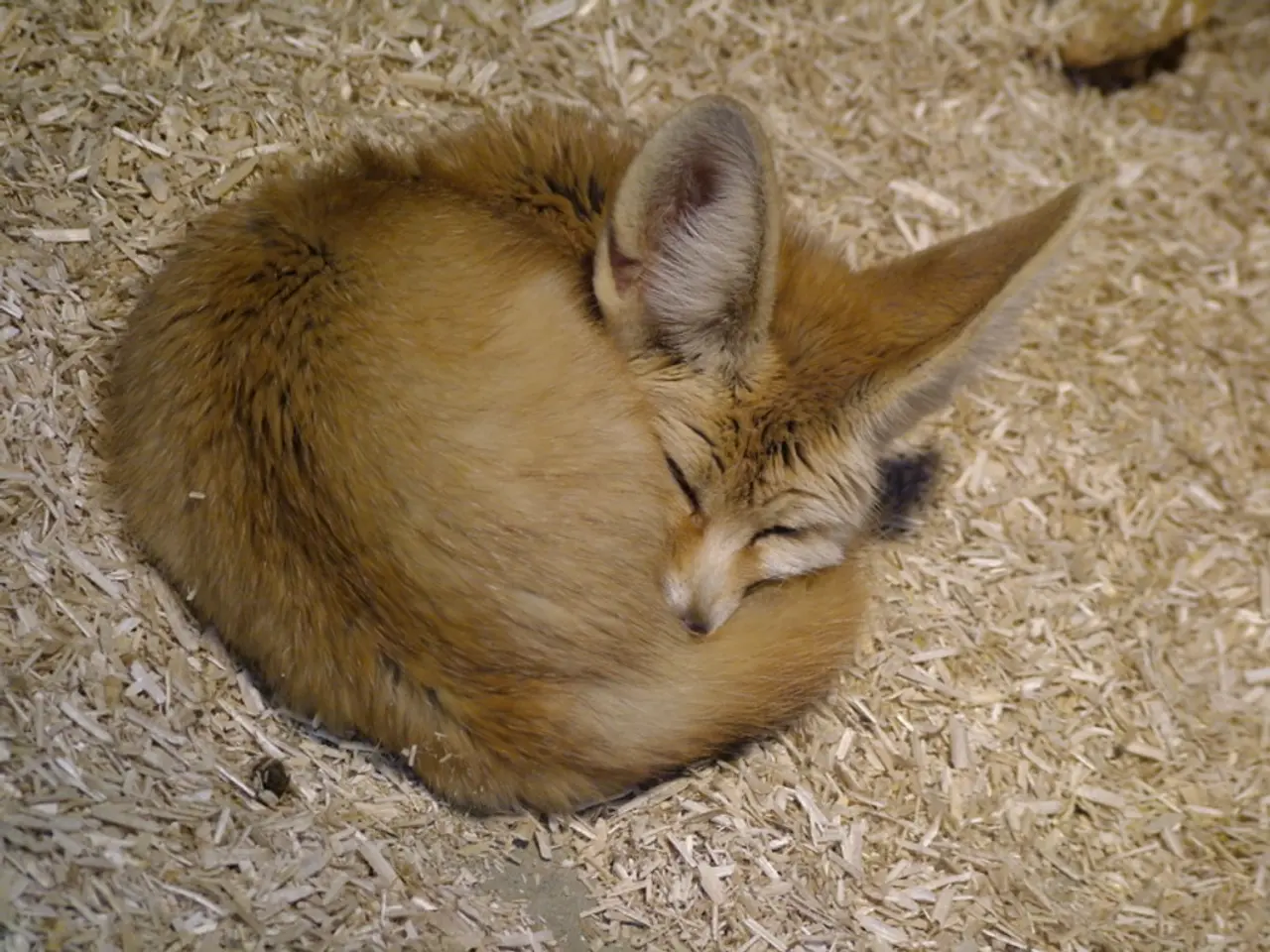Hibernation: An Exploration of its Impact on Living Organisms and Their Advantages
In the fascinating world of nature, some creatures have developed unique strategies to survive during periods of scarcity. Two such strategies, hibernation and daily torpor, have captured the attention of scientists for their intricate mechanisms and potential applications.
Hibernation: A Seasonal Energy-Saving Measure
Hibernation, a prolonged state of reduced metabolic activity, low body temperature, and minimal physiological activity, is a seasonal adaptation seen in some animals, particularly mammals. This state lasts weeks to months and is primarily used to conserve energy through extended periods of cold or food scarcity. Animals in hibernation rarely eat, move, or produce waste except during brief, mild arousals.
The ability to enter a state of hibernation first emerged in a group called Thrinaxodon, an ancestor of mammals that lived 252 million years ago. Today, the majority of animals that hibernate are small mammals like dormice, mice, bats, and the tiny Madagascan Cheirogaleus medius species of mouse lemur.
During hibernation, animals experience a decrease in body temperature. The body temperature of small animals can drop from an average of 37°C to as low as 5°C, and in some cases, even below 0°C. Larger animals like brown bears do not experience such a significant drop in body temperature.
The primary advantage of hibernation for organisms is the significant reduction in energy expenditure due to the fat reserves they accumulate before entering hibernation. This fat serves as a crucial energy source during the hibernation period.
Daily Torpor: A Daily Energy-Saving Mechanism
Daily torpor, by contrast, lasts only a few hours during a single day. It is a short-term reduction of metabolic activity and body temperature, allowing animals to conserve energy during inactive periods each day, especially when food is temporarily scarce or conditions are harsh.
An example of an animal that regularly enters daily torpor is some bats. These creatures use daily torpor to reduce their energy requirements, especially during the day when they are less active.
Torpor is also used by some species to hibernate and store fat for lactation periods. Some mammals, like bats and lemurs, have been observed to spend extended periods in a state of torpor during pregnancy to reduce their energy requirements.
The Key Differences
The key difference between hibernation and daily torpor lies in their duration and purpose. Hibernation is a prolonged state lasting weeks to months, while daily torpor lasts only a few hours within a day. The metabolic reduction during hibernation is profound and sustained, while the reduction during daily torpor is less profound and temporary. The body temperature drop during hibernation is significant, while the drop during daily torpor is moderated.
In summary, hibernation is a prolonged, seasonal torpor state, while daily torpor is a short-term, daily metabolic slowdown.
Implications for Humans
The understanding of hibernation and torpor has potential implications for humans, particularly in long-duration space travel and medicine. The concept of artificial hibernation, while still in its infancy, could potentially help us reactivate the trait of hibernation that we've lost in the past. This could lead to significant advancements in space exploration and medical procedures, making them less energy-intensive and more manageable.
Understanding the Rate of Metabolism: During hibernation, an animal takes an average of 5 breaths per minute and its heart beats only once. This slow metabolism reduces energy expenditure to a minimum. Similarly, during daily torpor, animals stop high-temperature thermoregulation, reducing their metabolic needs and energy requirements.
In conclusion, hibernation and daily torpor are fascinating adaptations that allow animals to survive during periods of scarcity. By understanding these mechanisms, we can potentially unlock new possibilities for human advancement in fields such as space travel and medicine.
[1] Daily Torpor and Hibernation in Mammals. (n.d.). Retrieved April 16, 2023, from https://www.britannica.com/science/daily-torpor [2] Hibernation. (n.d.). Retrieved April 16, 2023, from https://www.britannica.com/animal/hibernation [4] Torpor. (n.d.). Retrieved April 16, 2023, from https://www.britannica.com/animal/torpor [5] Torpor in Bats. (n.d.). Retrieved April 16, 2023, from https://www.britannica.com/animal/bat/Torpor-and-hibernation
- The principles observed in hibernation, a seasonal state of deep sleep in certain animals, could potentially contribute to advancements in the field of medical-conditions, particularly in finding energy-efficient solutions for long-term patients.
- Fitness-and-exercise enthusiasts may benefit from studying daily torpor, a short-term metabolic slowdown in some animals, as it provides insights into conserving energy during peak activity periods or periods of food scarcity in health-and-wellness practices.






